Lost remains of first American soldiers of Revolutionary War discovered in Virginia
Archaeologists have unearthed the remains of the first American soldiers from the Revolutionary War.
They discovered stones that were once part of Virginia’s first military barracks, which housed 2,000 people between 1776 and 1777 in what is now Colonial Williamsburg.
America was at that time engaged in a war of independence against the British. This war ended in 1781, five years after the US had declared its freedom.
The team also found personal belongings of the patriot troops, including lead bullets, buttons and a 225-year-old Virginia penny, as well as fireplaces and chimneys.
This discovery provides insight into Williamsburg’s military involvement during the Revolutionary War. These artifacts may provide further insight.
Images of the site show red bricks in the earth, lying where they had been broken up by the British army hundreds of years ago.
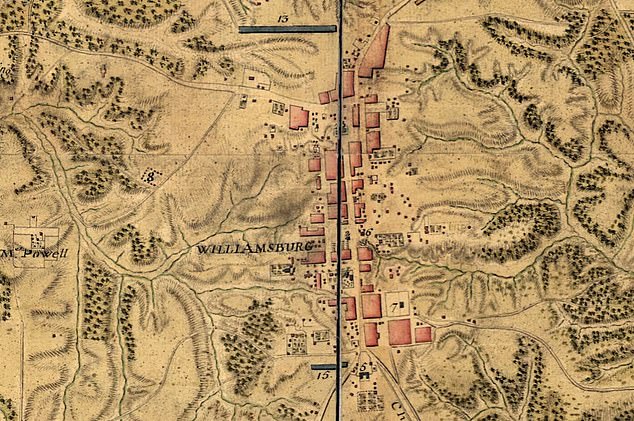
An 18th century French map of Williamsburg shows more than a dozen barracks in Williamsburg, with details of how they were built between 1776 and 1777 for the Continental Army as it fought the British.
Ashley McCuistion, a leading archaeologist, said The Washington Post: ‘These barracks were the first continental barracks in Virginia.
“This all happens right after independence is declared and we start forming the American government.”
The barracks were also built on the land of the British Governor, who had a palace built there.
But American soldiers took over the palace and the land and turned it into a military outpost with housing for thousands of people and 100 horses.
The team first found piles of red bricks buried beneath the surface, scattered across the ground.
The barracks were destroyed in 1781 by the troops of the British General Charles Cornwallis.
Cornwallis is best known for his surrender at the Siege of Yorktown in 1781, which effectively ended the war and began peace negotiations between Britain and the United States.
Years later, American soldiers recounted the incident, saying they were forced to leave the area as British troops advanced toward Yorktown.
Continental Army Private Spencer Davis issued a written statement in the early 1880s stating that the enemy appeared at night and “pounded our quarters.”
“There was a little fight and two of my acquaintances… (were) killed,” he continued.
‘The Americans withdrew about nine miles that night and saw the light of the fire in the barracks.’
The patriot army stationed at Colonial Williamsburg was led by CMeet David Humphrey, a good friend of George Washington.
Archaeologists have been working at the site since the summer of 2023, but announced their discoveries last May.
“This site, occupied from 1777 to 1781, is particularly valuable because it was built and used for only one purpose,” according to the official Colonial Williamsburg site.
‘Moreover, much of the site has remained largely untouched since the destruction of the barracks.’
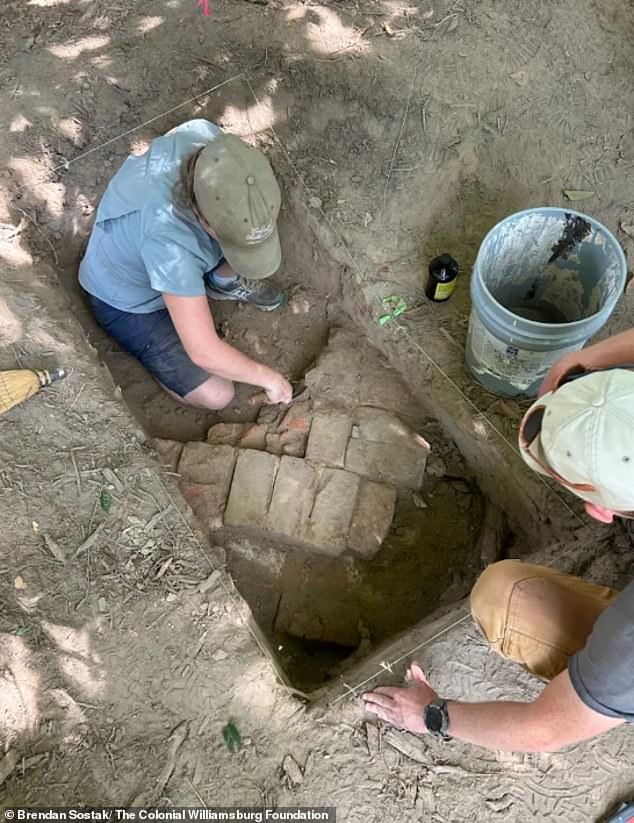
The housing units found in Colonial Williamsburg were built around 1776, but were later destroyed in 1781 by the troops of British General Charles Cornwallis.
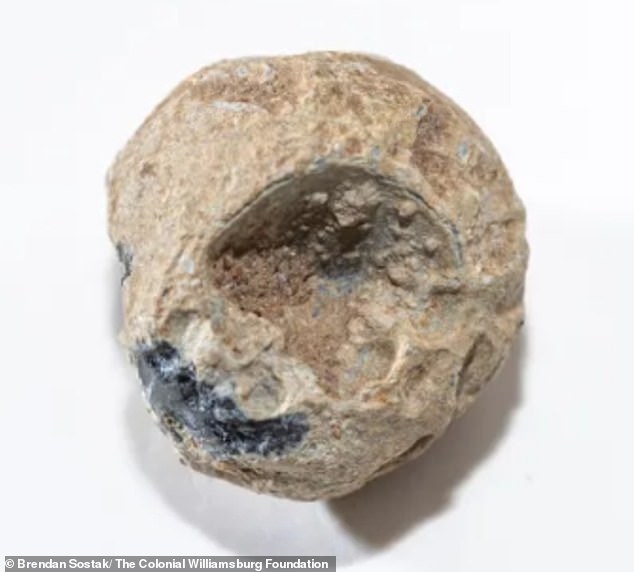
A lead bullet with a percussion mark was found. Soldiers chewed the bullets for their sweet taste.
The barracks site is estimated to be approximately three to four acres in size. Currently, only a small percentage of the site has been excavated.
The team also discovered personal belongings of the American soldiers, including a metal military belt that has since been corroded by the elements.
Also found at the site was a blue glass button, which still shone as if it had been freshly made, a small musket ball.
The teeth marks in the lead bullets were caused by a soldier chewing on them for their sweet taste. This was a common practice in the army.
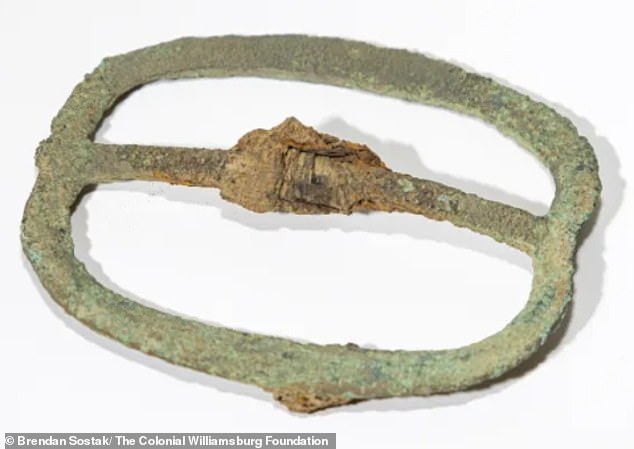
The team also discovered personal items belonging to the American soldiers, including a metal military belt that has since been weathered by the elements.
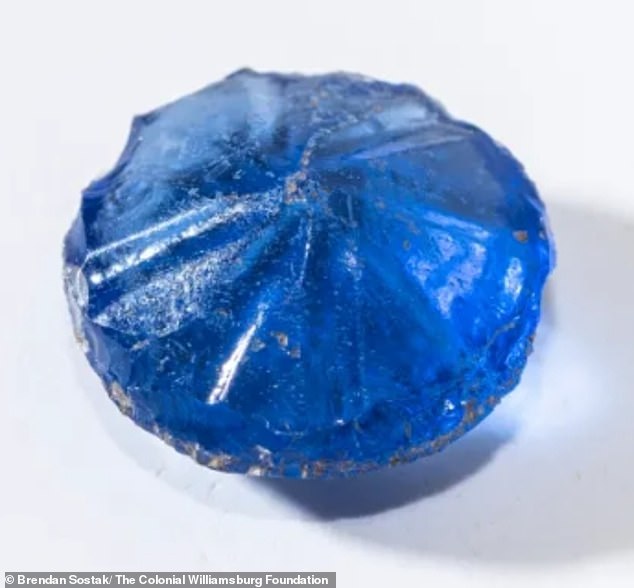
A blue glass button was found, still shining as if it had been freshly made
Jack Gary, director of archaeology at Colonial Williamsburg, said, “We have horseshoes.
‘We also have an object here, a snaffle bit. That is a part of the horse bit that is placed in the mouth to control the horse.
‘And this object here is part of a curry comb used to brush a horse’s coat.’
‘Here at Colonial Williamsburg we interpret the American Revolution and the politics that led up to it, and many of the events that led up to it.
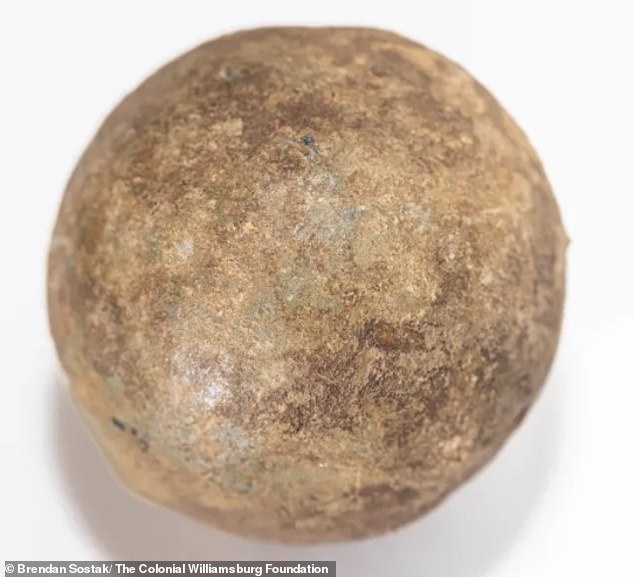
Small parts of a gun were also found during the excavation
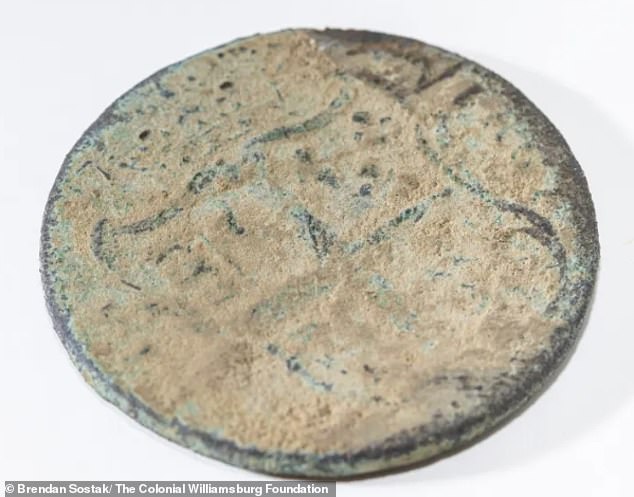
A 250-year-old Virginia half penny was also found in the earth
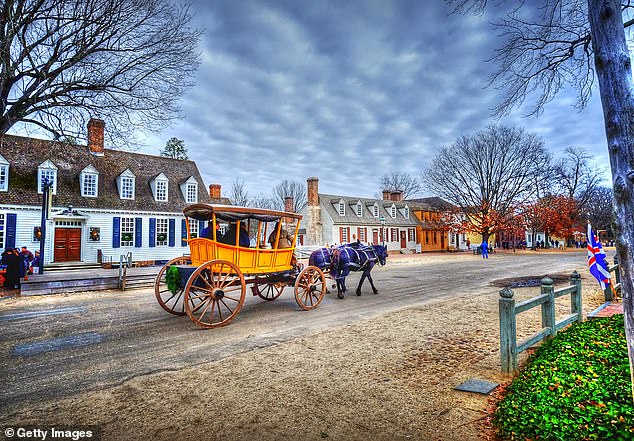
Founded in 1699 as the capital of the Virginia Colony, Williamsburg was one of America’s first planned cities. The original capital, Jamestown, was the first permanent English-speaking settlement in the New World, founded in 1607.
‘But yes, we don’t have many sites that tell us what really happened during the war. And this site does.
“It gives us insight into the daily life of the average soldier. It also tells us what the life of the officers was like.”
Founded in 1699 as the capital of the colony of Virginia, Williamsburg was one of the first planned cities in America.
The original capital, Jamestown, was the first permanent English-speaking settlement in the New World, founded in 1607.
